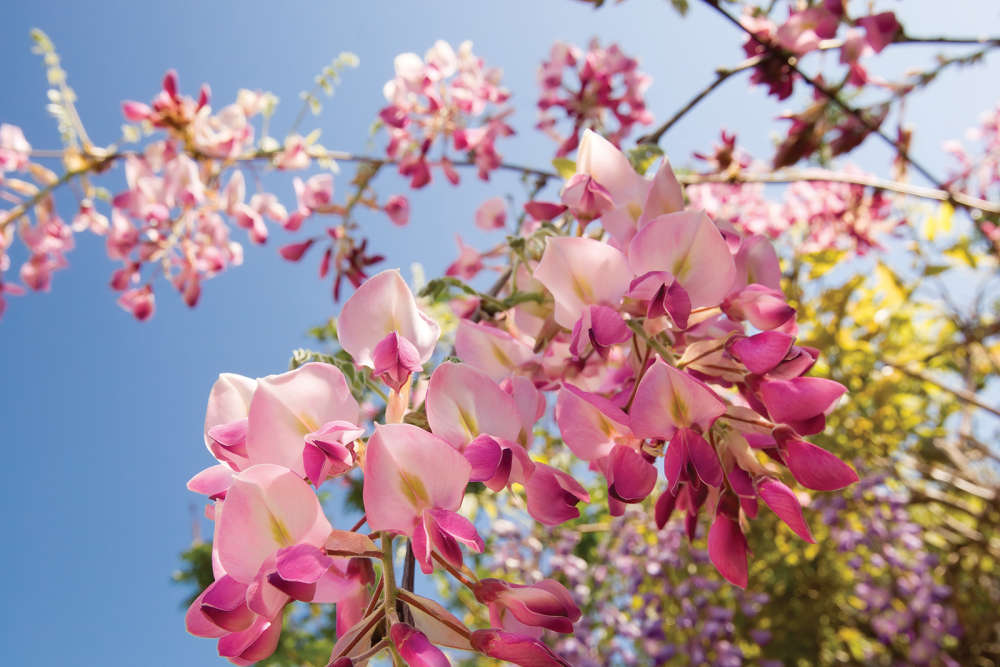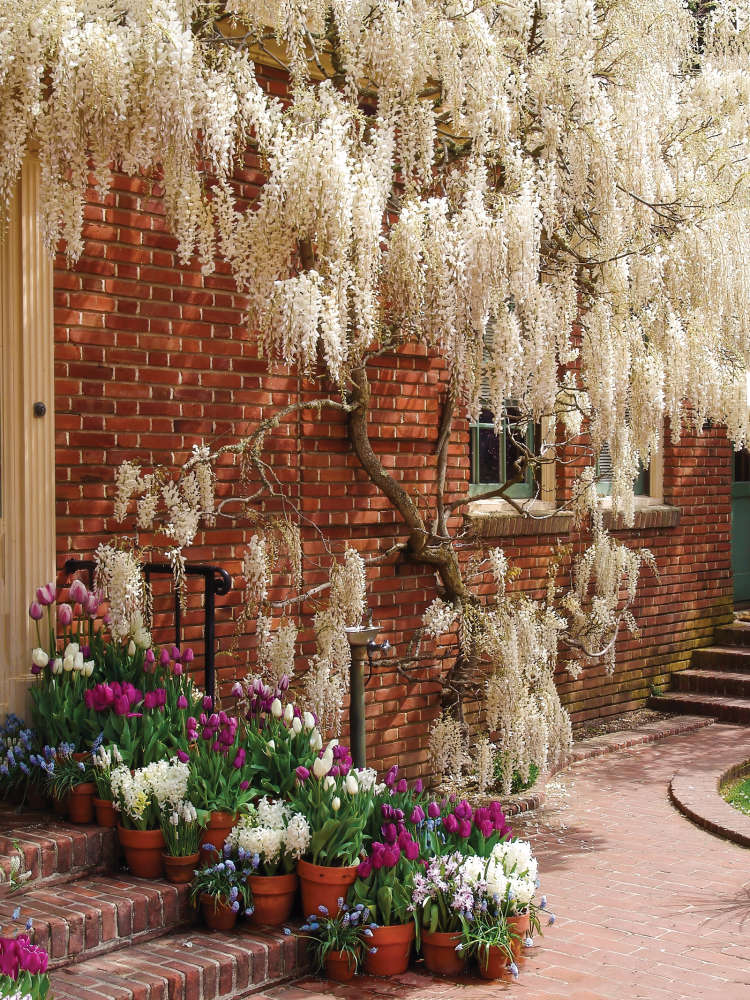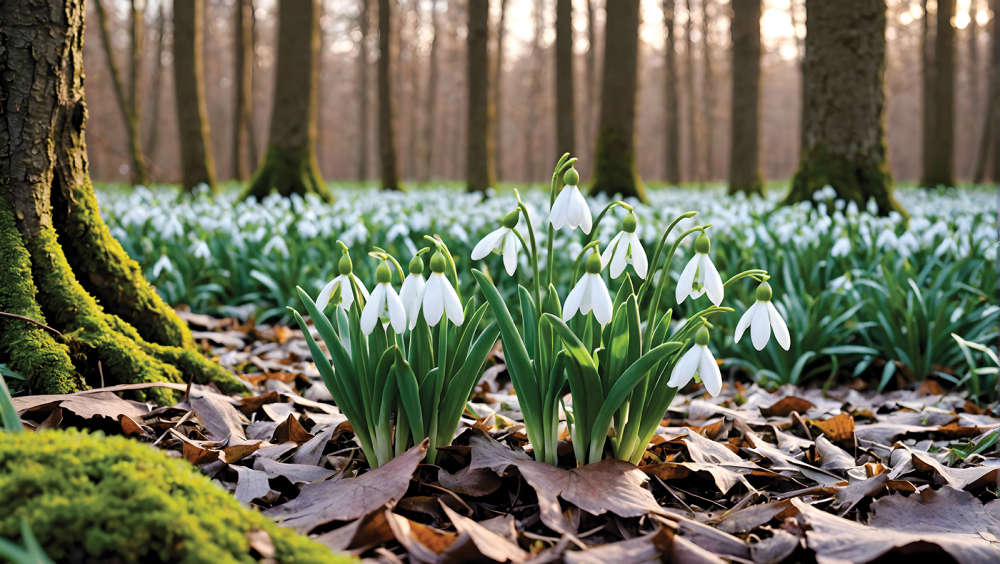
With its exquisitely fragrant, show-stopping blooms, wisteria is the queen of spring climbers – yet it can be frustratingly sulky and thuggish. Flo Whitaker offers a quick troubleshooting guide to floral success
My wisteria has never flowered. Why?
Wisteria is notoriously slow to commence flowering. Ideally, buy one in bloom – that way you’ll know it’s already developed a flowering cycle. Non-flowering may also be due to shady conditions, (wisteria requires a bright, sunny position) – or incorrect pruning. It’s tempting to constantly hack away at rampaging wisteria, but you could be removing potential flowers! Those annoying long whippy growths made in early summer should be cut back in July/August to leave short stems with three or four buds. Wisteria flowers are only produced on mature stems – buds made this summer will give blooms next year.
Why has my wisteria stopped flowering?
The answer probably lies below. Using a trowel, carefully excavate a small area of soil. Damaged/ decomposed roots, combined with a mushroom-like odour indicates rot – an increasingly common problem during our recent wet winters. Conversely, prolonged dry summers can stress a plant into submission. Established plants may recover from drought/rot damage.
If a wisteria suddenly collapses, the ‘graft’, (the connecting joint between the roots and above-ground growth) may have broken. With this scenario, alas, there is no cure.
Can I grow wisteria in a pot?
Yes, providing you employ a substantial container and commit to a high- maintenance pruning regime. If growing a ‘standard’ form, (an ‘umbrella’ of foliage above a tall, bare stem) place a few bricks and a thick layer of gravel into the container, before filling with soil-based compost. This will give anchoring weight to what will become a rather top-heavy structure. Wisteria planted in open ground do not require feeding, but potted specimens benefit from top-dressing with fresh compost and a slow-release feed every spring.

There are so many varieties and colours – what to choose?
All types are vigorous, but some are super-energetic, so don’t be beguiled by flowers alone. Read the labels and consider the planting site. For instance, if planting against a red brick wall, a pink-flowered form will probably not provide sufficient contrast. Some varieties produce ultra-long flowers that look stunning when festooned across a large area, but may appear cramped and out of scale on a container-grown specimen.
Do different types climb in different directions?
Weirdly, yes. The jury’s still out regarding this strange phenomenon. Japanese wisteria twines clockwise, whereas ‘left-handed’ Chinese wisteria grows anti-clockwise. You’ll notice the majority of cultivars at the garden centre determinedly growing in a clockwise direction because Japanese forms tend to produce showier blooms and are thus more appealing to plant breeders.
How long does wisteria live?
Potentially forever. There are many venerable specimens happily thriving around the world. A Chiswick resident, planted circa 1816, is thought to be the UK’s oldest, so look after your wisteria as it will probably outlive you.


 Blooming Times: Harbingers of Spring
Blooming Times: Harbingers of Spring
 Homes Extra: Home Sanctuary
Homes Extra: Home Sanctuary
 Home Style: Ancient & Modern
Home Style: Ancient & Modern
 Blooming Times: Happy Faces
Blooming Times: Happy Faces
 Blooming Times: Winter Sparklers
Blooming Times: Winter Sparklers
 Homes Extra: Restore, Repair, Recycle
Homes Extra: Restore, Repair, Recycle
 Home Style: A Scandi Winter's Tale
Home Style: A Scandi Winter's Tale
 Blooming Times: Winter Wonders
Blooming Times: Winter Wonders
 Home Style: Bold, Brave & Beautiful
Home Style: Bold, Brave & Beautiful
 Blooming Times: The Answer Lies in the Soil
Blooming Times: The Answer Lies in the Soil
 Blooming Times: Heavenly Hyacinths
Blooming Times: Heavenly Hyacinths
 Legendary Builds with Phoenix Construction Services
Legendary Builds with Phoenix Construction Services
 Blooming Times: Know Your Enemy
Blooming Times: Know Your Enemy
 Bespoke Dreams from Eridge Green Kitchens
Bespoke Dreams from Eridge Green Kitchens
 10 Hot Years: iFit Fires & Flues
10 Hot Years: iFit Fires & Flues
 Home Style: Bold Type
Home Style: Bold Type
 Blooming Times: The Sky's the Limit
Blooming Times: The Sky's the Limit
 Home Style: A Better Way of Life
Home Style: A Better Way of Life
 Homes Extra: Shed Space
Homes Extra: Shed Space
 Blooming Times: Top of the Pots
Blooming Times: Top of the Pots